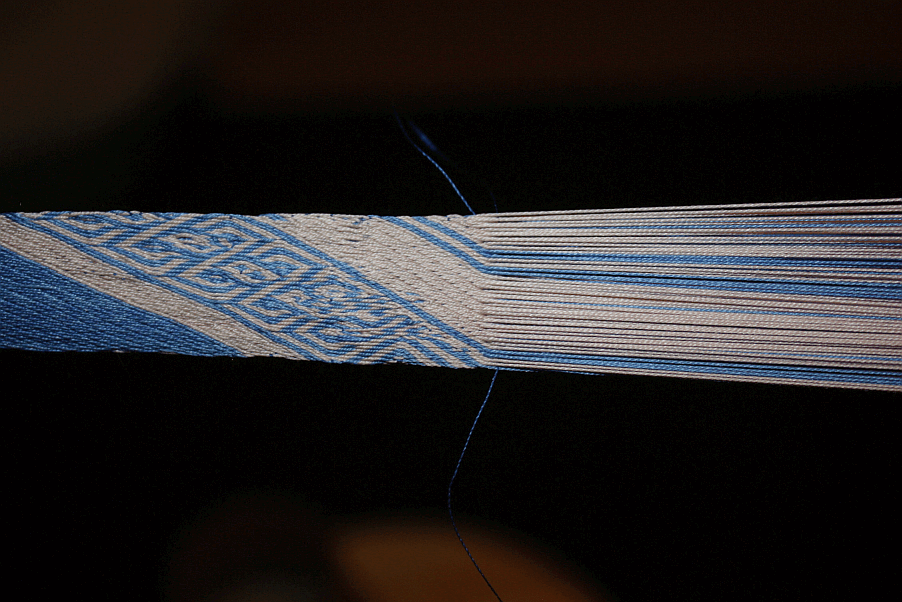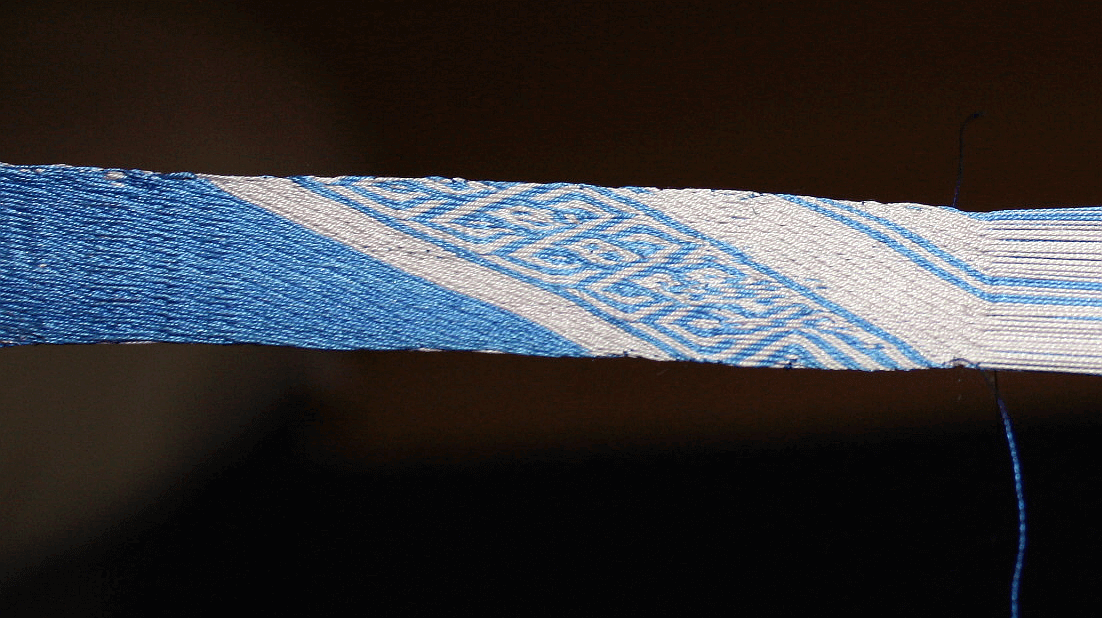With, of course, an angle - I'm trying to figure out possible ways in which medieval tablet-weavers might have arrived at their patterns, which are sometimes really, really breathtakingly complicated. There's rules to tablet-weaving, so you can't just place a carton with a drawing behind your warp and tapestry away; you have to plan ahead for the patterns and know when to reverse which direction, and keep track of your main direction of turning when you are doing twill, and so on and so forth.
While the basic rules and structures are fairly simple (I usually say that you need to be able to tell light from dark and count to two), keeping track of what has to go where in a complicated pattern can quickly bend your brain into knots. I've tried to figure out a few strategies using a part of the pattern of the Maniple of St. Ulrich, but that, alas, turned out to be a hard start. You can see how the pattern degenerates from my trying to use less of the written pattern draft and more of my own brain:

until I finally gave up and transitioned again into nice, clean pink background twill. (There's even a fault in the twill lines where I gave up, and a little bit of erring in the twill later on, as you can see from the floats and the blue spots.)
So. Next step was taking a step back and trying to build up things from the base line - in this case, from a single or double blue line on twill background. (It would of course be possible to forego the twill background and just do diagonals, but I think it's clearer to see the pattern afterwards if it is on a solid colour background. So there you go. Also... I like twill in tablet weaving.)
There are certain patterns and rhythms to much of the weaving, and I think that a large part of the trick is to learn those patterns and basic rhythms, and learn when to look where to make sure nothing unplanned is happening. Also: Rules. Hard and firm rules regarding the sequence of the individual steps to be done (turning tablets, inserting wefts, and re-sorting tablets) as well as the base setup (one direction of turning will always result in the stripes running the same way for me, or I will go crazy).

And then, more patterns can be built up on that. Next step: lines branching out from lines, and figuring out how to figure out when to reverse directions for pointy bits growing out of nowhere...